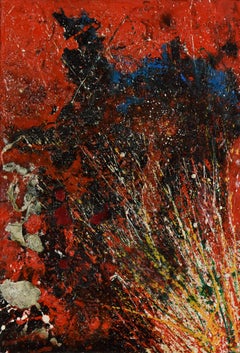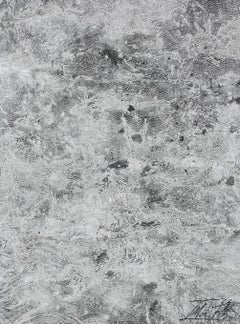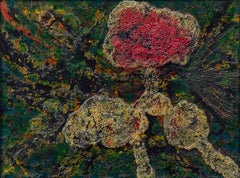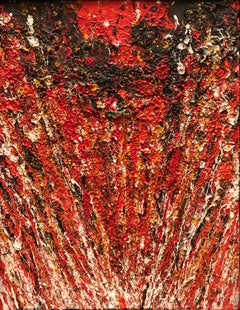Imai Toshimitsu
1960s Abstract Expressionist Abstract Paintings
Canvas, Oil
1990s Abstract Abstract Paintings
Acrylic, Paper
Recent Sales
1960s Abstract Abstract Paintings
Oil
Mid-20th Century Abstract Abstract Paintings
Oil
2010s Contemporary Figurative Paintings
Ink, Mixed Media
Late 20th Century Abstract Expressionist Abstract Prints
Lithograph
People Also Browsed
1960s Abstract Expressionist Abstract Prints
Lithograph
Vintage 1960s Italian Mid-Century Modern Sofas
Bouclé
21st Century and Contemporary Italian Mid-Century Modern Sofas
Fabric
Late 20th Century French Sofas
Leather
Antique Late 19th Century Italian Urns
Marble
Vintage 1920s French Art Deco Vases
Blown Glass
Antique 19th Century German Rococo Figurative Sculptures
Porcelain
Vintage 1970s Unknown Regency Screens and Room Dividers
Oak
Vintage 1970s Italian Modern Armchairs
Steel
Antique Late 19th Century German Neoclassical Vases
Porcelain
21st Century and Contemporary German Modern Floor Lamps
Steel
1980s Abstract Expressionist Abstract Paintings
Acrylic, Canvas
Antique 18th Century Finnish Baroque Paintings
Glass, Giltwood, Paint
2010s Abstract Paintings
Oil
Antique Early 19th Century Italian Urns
Alabaster
Antique Late 18th Century Dutch Neoclassical Urns
Silver
Imai Toshimitsu For Sale on 1stDibs
How Much is a Imai Toshimitsu?
Toshimitsu Imai for sale on 1stDibs
Born in Kyoto, Japan, in 1928, Toshimitsu Imai was part of the 20th-century Japanese avant garde. He began his formal education at the Tokyo State Art Academy where he took up painting. His early works are characterized by colorful abstractions, reminiscent of Fauvism. In 1951, Imai was awarded the Kansai-Shinseisaku Prize and in 1952 the prize for the best new artist at the 15th Shinseisaku Salon.
Imai relocated to Paris in 1953, the same and subsequent year he exhibited at the Salon de L’Art Sacré. Meanwhile, he attended the Académie de la Grande Chaumière and the Sorbonne to study medieval history and philosophy. In 1955, Imai completely abandoned representational art in favor of abstraction. After meeting the art critic Michel Tapié via the artist Sam Francis, Imai was the first Japanese artist to join the Art Informel movement.
In 1956, Imai was called upon by the Japanese artist Taro Okamoto to curate an exhibition titled “The World: Today’s Art in Tokyo.” Artists such as Jean Dubuffet, Jean Fautrier, Lucio Fontana and Karel Appel gained important exposure in Japan. It was also in 1957, when Imai arranged for Tapié and the artists Georges Mathieu and Sam Francis to travel to Japan, that a connection between Art Informel and Gutai occurred. The Ashiya-based Gutai Art Association, formed in 1954, was proclaimed a kindred spirit and subsequently promoted internationally by Tapié. Founding members included Yoshihara Jiro, Kanayma Akira, Murakami Saburo, Shiraga Kazuo and Shozo Shimamoto. The art historian Yve-Alain Bois commented, “The activities of the Gutai group in the mid 1950s constitute one of the most important moments of postwar Japanese culture.”
Most notably, Imai’s work was exhibited at the São Paulo Biennial in 1953 and the Venice Biennale in 1960, which brought him international acclaim. In addition, his work was sold by the art dealer Leo Castelli in New York in 1956 and was exhibited at the legendary Galerie Stadler in Paris. In 1962, Imai was awarded a prestigious prize at the 5th Exhibition of Japanese Contemporary Art in Tokyo. Several works from this exhibition can now be found in the Museum of Modern Art, Tokyo.
Although largely an abstract painter, Imai fluctuated between figurative and abstract, and in the 70s he began to integrate poetic text into his paintings. At this time, he split his time between Paris and Japan, later participating in a two-year show at the Centre Pompidou in Paris in 1982. In 1984, Imai cofounded the Japanese Contemporary Artists’ Association.
In 1991 Imai was made an honorary citizen of Madrid and in 1992 of Lyon. He received numerous distinctions and awards, including being named a chevalier de la Légion d’honneur in 1996 and in 1997 an officier de l'Ordre des Arts et des Lettres.
(Biography provided by Stern Pissarro Gallery)
A Close Look at Abstract Art
Beginning in the early 20th century, abstract art became a leading style of modernism. Rather than portray the world in a way that represented reality, as had been the dominating style of Western art in the previous centuries, abstract paintings, prints and sculptures are marked by a shift to geometric forms, gestural shapes and experimentation with color to express ideas, subject matter and scenes.
Although abstract art flourished in the early 1900s, propelled by movements like Fauvism and Cubism, it was rooted in the 19th century. In the 1840s, J.M.W. Turner emphasized light and motion for atmospheric paintings in which concrete details were blurred, and Paul Cézanne challenged traditional expectations of perspective in the 1890s.
Some of the earliest abstract artists — Wassily Kandinsky and Hilma af Klint — expanded on these breakthroughs while using vivid colors and forms to channel spiritual concepts. Painter Piet Mondrian, a Dutch pioneer of the art movement, explored geometric abstraction partly owing to his belief in Theosophy, which is grounded in a search for higher spiritual truths and embraces philosophers of the Renaissance period and medieval mystics. Black Square, a daringly simple 1913 work by Russian artist Kazimir Malevich, was a watershed statement on creating art that was free “from the dead weight of the real world,” as he later wrote.
Surrealism in the 1920s, led by artists such as Salvador Dalí, Meret Oppenheim and others, saw painters creating abstract pieces in order to connect to the subconscious. When Abstract Expressionism emerged in New York during the mid-20th century, it similarly centered on the process of creation, in which Helen Frankenthaler’s expressive “soak-stain” technique, Jackson Pollock’s drips of paint, and Mark Rothko’s planes of color were a radical new type of abstraction.
Conceptual art, Pop art, Hard-Edge painting and many other movements offered fresh approaches to abstraction that continued into the 21st century, with major contemporary artists now exploring it, including Anish Kapoor, Mark Bradford, El Anatsui and Julie Mehretu.
Find original abstract paintings, sculptures, prints and other art on 1stDibs.
Finding the Right Paintings for You
Painting is an art form that has spanned innumerable cultures, with artists using the medium to tell stories, explore and communicate ideas and express themselves. To bring abstract paintings, landscape paintings, still-life paintings and other original paintings into your home is to celebrate and share in the long tradition of this discipline.
When we look at paintings, particularly those that originated in the past, we learn about history, other cultures and countries of the world. Like every other work of art, paintings — whether they are contemporary creations or works that were made during the 19th century — can often help us clearly see and understand the world around us in a meaningful and interesting way.
Cave walls were the canvases for what were arguably the world’s first landscape paintings, which depict natural scenery through art. Portrait paintings and drawings, which, along with sculpture, were how someone’s appearance was recorded prior to the advent of photography, are at least as old as Ancient Egypt. In the Netherlands, landscapes were a major theme for painters as early as the 1500s. Later, artists in Greece, Rome and elsewhere created vast wall paintings to decorate stately homes, churches and tombs.
Today, creating a wall of art is a wonderful way to enhance your space, showcase beautiful pieces and tie an interior design together.
No matter your preference, whether you favor Post-Impressionist paintings, animal paintings, Surrealism, Pop art or another movement or specific period, arranging art on a blank wall allows you to evoke emotions in a room while also showing off your tastes and interests. A symmetrical wall arrangement may comprise a grid of four to six pieces or, for an odd number of works, a horizontal row. Asymmetrical arrangements, which may be small clusters of art or large, salon-style gallery walls, have a more collected and eclectic feel.
Download the 1stDibs app, which includes a handy “View on Wall” feature that allows you to see how a particular artwork will look on a particular wall, and read about how to arrange wall art. And if you’re searching for the perfect palette for your interior design project, what better place to turn than to the art world’s masters of color?
On 1stDibs, you’ll find an expansive collection of paintings and other fine art for your home or office. Browse abstract paintings, portrait paintings, paintings by emerging artists and more today.



